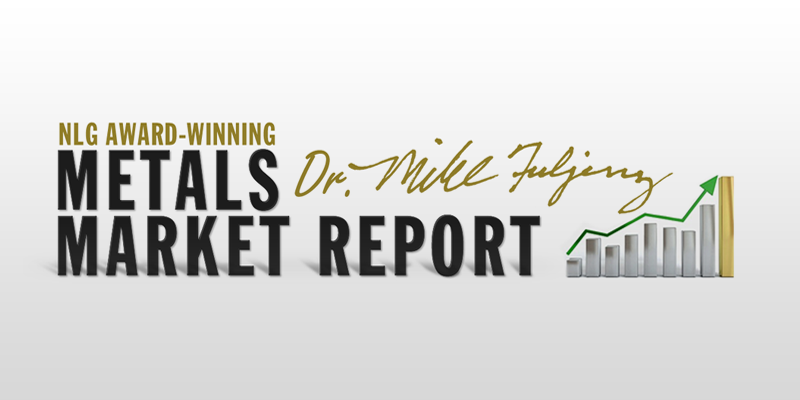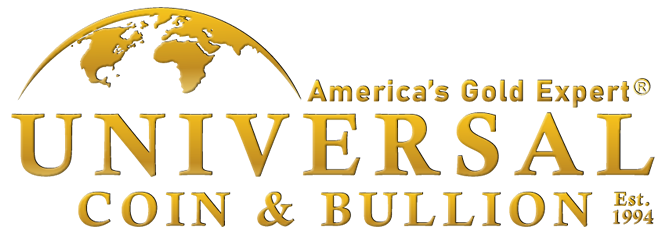
June 2025 – Week 1 Edition
Dr. Mike Fuljenz’s Recommended Rare Coin of the Week
A lot happened in America in 1884, France formally presented the United States with the iconic Statue of Liberty, the Washington Monument was completed and the first roller coaster was unveiled at Coney Island in Brooklyn, New York.
And just over 2,900 miles away, at the San Francisco Mint, the 1884-S $20 Liberty Head Double Eagle was being minted. Through the years, these coins have been sought after by collectors for decades and when I wrote my first book about Type 3 Double Eagles, I noted that even though some lower grades can be easily found, finding nicer specimens could be challenging.
“‘I remember when this date was very difficult to find in MS63. It is still scarce and a favorite of mine,’” I remarked at the time, noting this in my book, which went on to be chosen as the Book of the Year by the Numismatic Literary Guild.
Since that time, there haven’t been many more of these coins that have come onto the market, although they can be found; there are only 626 total coins graded in this condition by the Professional Coin Grading Service (PCGS) and the Numismatic Guaranty Company (NGC).
With some considerable effort, I was able to find seven 1884-S $20 Double Eagle coins in MS63 condition or better, including an MS63+. Because of this, I have chosen to make the 1884-S in MS63 our coin of the week to ensure our clients have the first opportunity to acquire the coins I believe have the most future potential. These coins are very nice for their grade and I wanted to pass this opportunity along to them. I also reject a lot of coins because even though they may have the same grade as a nicer coin, their appearance, luster and eye-appeal do not meet the standards I try to keep for the coins I recommend.
If you would like to own an 1884-S Double Eagle that is even better than what is on display in the National Numismatic Collection at the Smithsonian Institution's Museum of American History, then you need to contact your representative now. With only seven of these coins in our inventory, they will go fast.
Monthly Market Review for May and 2025 (So Far)
For the month of May, the stock market finally recovered but only far enough to reach ZERO for the year-to-date. So far, three of the four major market indexes are slightly below zero through May 31, while gold has gained 26%. All of the precious metals are still up strongly for the year-to-date, even though most commodities are down and the CRB Commodity Index is down -0.4% for the year so far.

The U.S. Dollar Index (DXY) has been down 10% since its peak on January 13, falling from 110 in the week before President Trump took the oath of office to 98.8 now. Much of this decline comes from the uncertainty of the outcome of Trump’s changing tariff rates with various trading partners. A falling dollar tends to support gold’s rise but the falling dollar hasn’t been any help to commodities outside precious metals. Key energy commodities are down by double-digits this year, like oil (-12%) and coal (-18%).
Federal Deficits Keep Rising – Despite the BIG Beautiful Bill
There’s a new book out this week by legendary Wall Street investor Ray Dalio, which shows that nations that maintain annual deficits greater than 3% of annual GDP tend to go bankrupt in the long run. America has been spending at twice that “death spiral” rate since 2020. This year, with a GDP estimated at $28 trillion, we’re headed for a $2 trillion deficit, which is over 7% of GDP.
Dalio’s book, “How Countries Go Broke: The Big Cycle” profiles several nations, many of which still “exist” (like Japan or Italy), but can’t grow or compete well. According to The Economist, our 2025 budget deficit (as a percentage of GDP) is 7.6%, the highest in the world. China’s rate is 5.9% and the Euro region averages 3.3%. Only a few big economies keep their deficits at a manageable and relatively healthy low rate, with Canada at 2% (of GDP), Australia at 1.8% and Switzerland with a 0.6% surplus! However, all three of these examples have vastly different and higher overall tax rates than the U.S.
Our chief economic rival, China, is also entering a long-term debt death spiral (similar to Japan’s), as it fights deflation but we’re mostly concerned about America.
We’re seeing U.S. interest rates remain high, while the Fed stubbornly refuses to cut rates, even though most other nations are consistently cutting their rates. Central bank rates in China and Japan are only 1.6% and 1.5%, respectively, and the average euro rate is 2.7% but the U.S. average is 4.6%, hurting our real estate market and many businesses. The Fed keeps fearing inflation, which hasn’t materialized this year.
There may be a political angle here, since Fed Chair Jerome Powell majored in politics, not economics. Powell and other recent Fed Chairs clearly favored ultra-low interest rates for Democrat Barack Obama, while raising rates or keeping them high under Donald Trump. Under Fed Chairs Ben Bernanke and Janet Yellen, the Fed Funds Rate was set at ZERO to 0.25% for the entire Obama Presidency (2009-16), and they also gave him four rounds of Quantitative Easing (QE), a fancy name for printing more money, like creating “training wheels” or an “uneven playing field” to guarantee no recessions under Obama’s watch.
Then, when President Trump assumed office in 2017, his newly appointed Fed Chairman, Jerome Powell, raised interest rates from the established zero to 0.25% range, up to 2.4% by late 2018, contributing to a major market crash in the fourth quarter, going into the 2018 mid-term elections. This caused a rift between Trump and Powell that hasn’t healed, especially as Powell keeps delaying any needed rate cuts in 2025, pushing the interest on the national debt to nearly $1 trillion this year, more than total defense costs.
Due to rising interest rates, interest payments on the national debt have risen by 170% from 2021 to 2025:

Remember this Jerome Powell-created albatross when considering how the deficit under President Trump ends up this year. Powell needs to cut the interest rate. Period!

Gold rose by $100 on the first trading day of June, approaching a new all-time high above $3,400. The widely traded August futures contract rose from a close of $3,289 on Friday, May 30, to a high of $3,405 (+3.5%) on Monday, June 2, before settling slightly below $3,400. The July silver contract rose more on a percentage basis, from a close of $32.89 on Friday to $34.65 on Monday (+5.4%). The proximate cause was (surprise!) a weekend statement that “the Chinese are not doing what they said they would do in early May.” These comments on tariff negotiations also sent the S&P 500 swinging by 215 points (about 3.7%) within 24 hours from Thursday to Friday, so these short-term moves have little or no meaning long-term.



